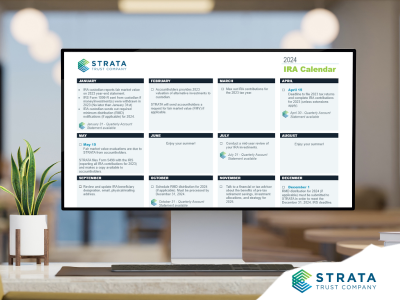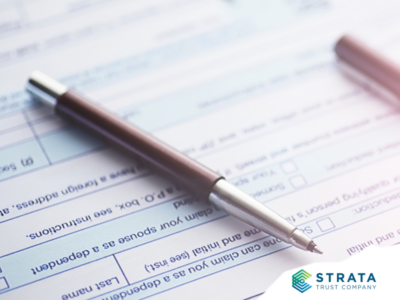As the 2023 tax-filing deadline quickly approaches, it may be easy to forget to make your annual contribution to your self-directed IRA. But failing to timely contribute to your IRA may leave tax savings on the table—or may leave your retirement savings short. The following reminders about your 2023 Traditional or Roth IRA contributions may help keep you on course.
2023 IRA Contribution Deadline
Generally, the latest that individuals can contribute to their IRA for 2023 is their tax filing date—not including extensions. For most taxpayers, that date is Monday, April 15, 2024. Those living in Massachusetts or Maine have until April 17 because of the Patriot’s Day and Emancipation Day holidays. And those living in federally declared disaster areas also have additional time to file. According to a February 16, 2024, IRS news release, the IRS automatically identifies taxpayers located in a covered disaster area and applies the filing and payment relief. But if you think that you may be affected by a federally declared disaster, you may phone 866-562-5227 to request this tax relief.
You may file for an extension—generally until October 15, 2024—but this doesn’t extend your IRA contribution deadline, and this extension does not give you more time to pay your tax obligation. Specifically, if you don’t pay any taxes owed by your regular deadline, interest on the outstanding amount will accrue.
What to Choose: Roth or Traditional IRA?
Many factors can affect whether funding a Traditional or a Roth IRA makes the most sense. Sometimes it boils down to whether you can deduct your Traditional IRA contribution. Some retirement savers will always make a Roth IRA contribution if they are eligible, simply because the prospect of tax-free earnings is too good to pass up. Still others may contribute to both, either as a hedge or because they may be eligible for a partial Traditional IRA deduction—and they are also eligible to fund a Roth IRA. (See our article, IRS COLA Changes for 2024, for more details on Traditional IRA deductibility and Roth eligibility.)
While the formulas for determining Roth IRA eligibility and Traditional IRA deductibility are not complicated, we recommend that you seek sound tax advice to find out your contribution options. You can also get more information in IRS Publication 590-A, which contains explanations and helpful worksheets.
- Note: If you make a nondeductible contribution to your Traditional IRA, you must file IRS Form 8606 with your federal tax return. This form documents your after-tax contribution(s) to ensure that you don’t pay tax on your IRA basis when you take a distribution in a later year. If you’ve ever made such nondeductible contributions, you (or your beneficiaries) will also file Form 8606 in any year that you take a distribution from any of your Traditional IRAs.
How Much Can I Contribute for 2023?
The basic contribution rules are simple: If you have eligible compensation—or “earned income”—you are likely eligible to contribute to a Roth or Traditional IRA. Of course, there are always exceptions. For example, if you (and your spouse, if you are married) have too much income for the year, you may not be able to make a Roth IRA contribution. Similarly, if you or your spouse have a retirement plan at work, your income may limit your eligibility to deduct your Traditional IRA contribution. But if you are eligible to contribute, here are the 2023 IRA limits.
- If you are under age 59½ for all of 2023, your maximum contribution is $6,500.
- If you reached age 59½ at any point in 2023, you may contribute an additional $1,000, for a total of $7,500.
If your spouse doesn’t have earned income but you do, you may contribute on your spouse’s behalf if you file a joint tax return.
Indicate That Your Contribution Is for the Prior Year
IRA contributions made between January 1 and April 15 for the previous tax year are called “carryback contributions” and are quite common. But don’t assume that a contribution during this window will be treated as a carryback. It won’t—unless you specifically designate it as a contribution for the prior year. Such deposits are reported to the IRS as prior-year contributions, so if your custodian does not know that the contribution is for the previous year, the reports that are issued may not reflect how you treated your contribution on your tax return. To avoid such problems, fill out STRATA’s Deposit Certification form and complete Section 2 for the 2023 tax year.
Next Steps
You may want to consider automating your contributions to ensure you’re maximizing the tax benefits of your STRATA IRA. If a new investment is not in the near future, you can also explore leveraging uninvested cash through public equity trading. Visit Fund Your Account to learn more about funding options—and if you have questions, our self-directed IRA experts can help you learn more about 2023 contribution limits, automating deposits, funding your account, or public equity trading with your STRATA self-directed IRA.









